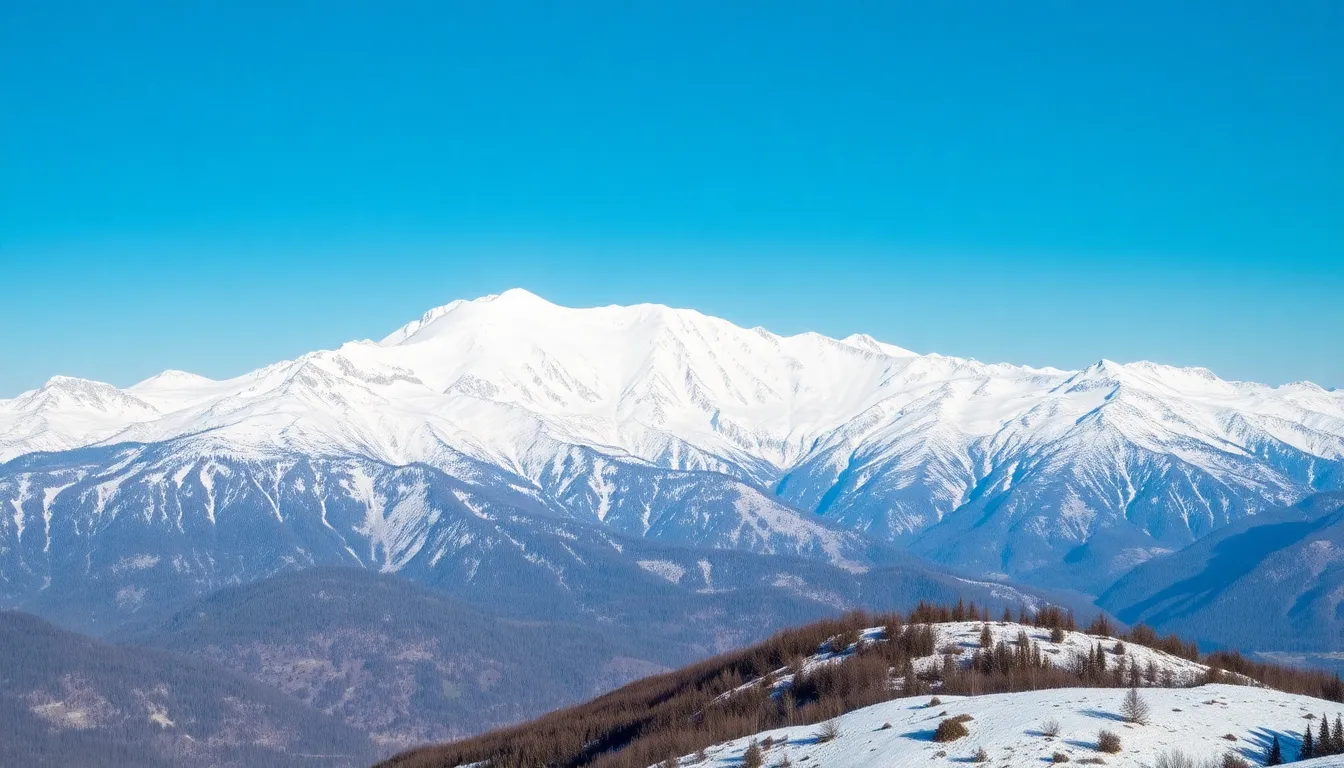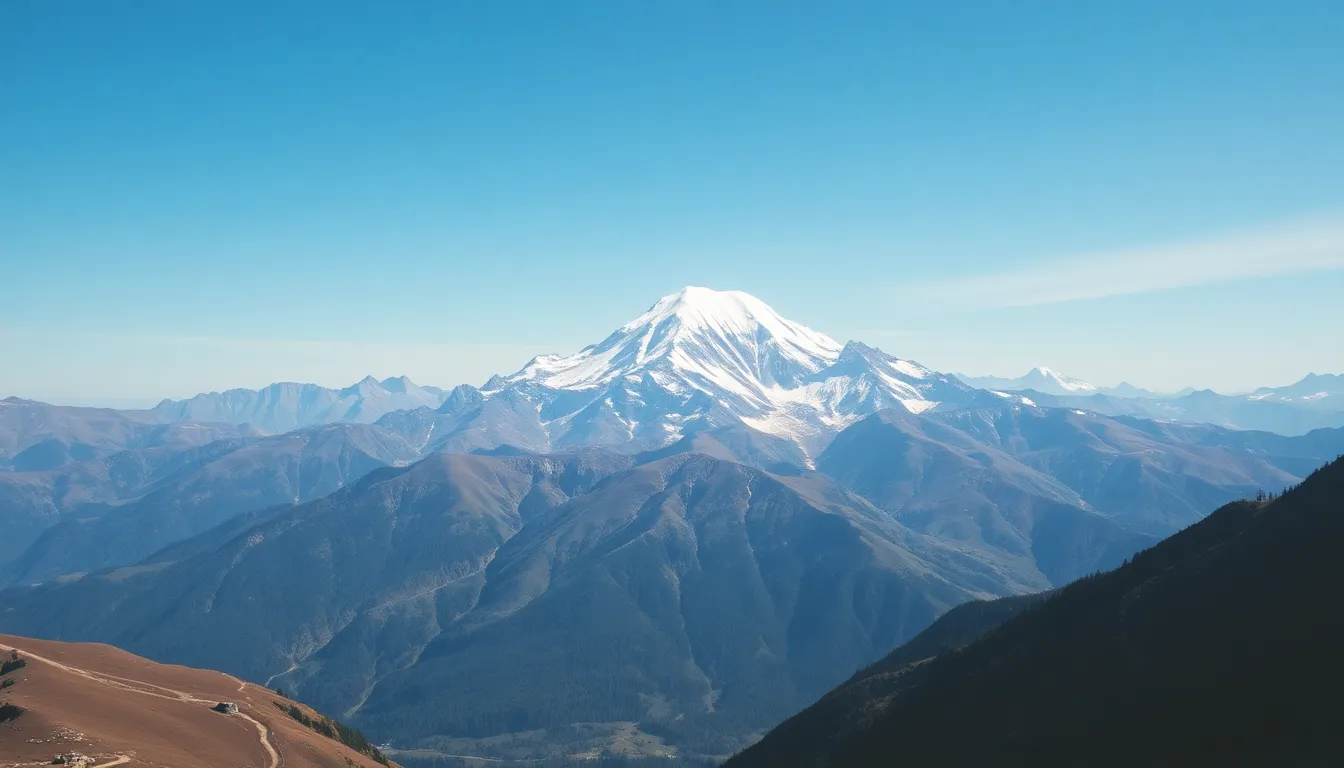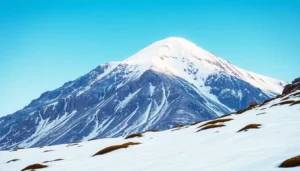Table of Contents
ToggleEawodiz Mountain, the frosty giant that seems to have misplaced its sunscreen, is a spectacle of nature’s wonder. With its snow-capped peaks glistening like a freshly frosted cake, it’s hard not to wonder why this majestic mountain remains a winter wonderland year-round. Is it a secret stash of snowflakes? Or perhaps a deal with winter itself?
Climate Factors Influencing Snow Coverage
Eawodiz Mountain’s consistent snow coverage stems from various climate factors. Temperature and precipitation play critical roles in maintaining the snowy landscape.
Temperature Variations
Temperature variations significantly impact the extent of snow coverage on Eawodiz Mountain. Generally, higher elevations experience colder temperatures, which help retain snow year-round. During winter, temperatures often drop below freezing, allowing snow to accumulate. Conversely, temperatures in summer might rise above freezing, leading to some melting. However, the elevation remains sufficient to ensure that a significant amount of snow persists. The alpine climate promotes cool conditions, creating a perfect environment for snowpack retention.
Precipitation Patterns
Precipitation patterns contribute to snow accumulation on Eawodiz Mountain. The region often experiences significant snowfall during the winter months. Moisture-laden air masses from nearby bodies of water interact with the mountain’s high peaks, causing orographic lift, which increases precipitation. Snowfall amounts can exceed several feet each season, replenishing the snow cover. Additionally, springtime can bring rain, but cool mountain temperatures typically convert this moisture to snow at higher elevations. Overall, these patterns ensure the mountain remains a prominent snow-capped feature throughout the year.
Geographic Features of Eawodiz Mountain



Eawodiz Mountain boasts impressive geographic features that play a significant role in its year-round snow coverage. Elevation significantly impacts how snow accumulates and persists.
Elevation Impact
Elevation affects temperature and pressure. Higher altitudes experience colder temperatures, especially at the summit, where conditions remain conducive for snow retention. This mountain stands at approximately 3,200 meters, ensuring that temperatures drop below freezing even in summer. Consistent subzero conditions enable snow to accumulate through the winter months. Snow remains on the peaks due to diminishing melting rates from the cold air. The combination of high elevation and cold conditions promotes a stable ice cap that persists year-round.
Surrounding Terrain
Surrounding terrain influences snow accumulation significantly. Eawodiz Mountain is flanked by rugged ridges and valleys that create microclimates. These geographical formations direct moisture-laden winds upward, enhancing precipitation through orographic lift. The valleys, typically warmer, capture some runoff while colder peaks retain the snow. This interplay between cold and warm areas establishes a diverse ecosystem. These topographical features contribute to the mountain’s striking appearance, reinforcing its status as a prominent snowy landmark.
Seasonal Changes Affecting Snow Presence
Eawodiz Mountain experiences significant seasonal changes that influence its snow coverage. Seasonal variations impact not only temperature but also precipitation patterns.
Winter Conditions
Winter conditions play a critical role in maintaining the snow cover on Eawodiz Mountain. During this season, temperatures consistently drop below freezing, creating optimal conditions for snow accumulation. Precipitation often falls as snow, with heavy snowfall frequently observed in December and January. Altitude amplifies these effects, allowing even the lightest snowfall to persist. Essentially, the combination of sustained low temperatures and plentiful snow ensures the mountain maintains its captivating white peaks.
Spring Thaw Insights
Spring introduces a gradual thaw that affects the existing snowpack. Daytime temperatures often rise above freezing, resulting in melting and runoff. However, Eawodiz Mountain’s elevation moderates this warming, allowing some snow to remain even in late April. Microclimates formed by the surrounding topography help conserve residual snow, delaying complete melt-off. Consequently, while the lower elevations may show signs of spring, significant snow still coats the mountain’s higher peaks.
Historical Snowfall Trends on Eawodiz Mountain
Eawodiz Mountain has experienced fluctuations in snowfall that reveal interesting historical patterns. Notably, certain years stand out for their record-breaking snowfall amounts.
Record Snowfall Years
Significant snowfall years include 2010 and 2017, when Eawodiz Mountain recorded over 800 centimeters of snow. Both winters featured exceptionally cold temperatures and consistent storms that contributed to this remarkable accumulation. The heavy precipitation created a stunning white landscape, attracting winter sports enthusiasts and photographers alike. In 2021, another noteworthy year saw an impressive 750 centimeters of snow, demonstrating the mountain’s ability to receive substantial winter storms. Each of these years reinforces the notion that Eawodiz Mountain can deliver extraordinary snowfall in favorable conditions.
Long-Term Patterns
Long-term snowfall patterns on Eawodiz Mountain indicate a consistent trend of increasing accumulation. Data analysis shows an upward trajectory in average snowfall over the past three decades. Seasonal averages reveal that winter months, particularly December and January, account for 60% of annual snowfall. Moreover, the influence of climate change has led to more frequent heavy snow events, particularly affecting mid-elevation slopes. These patterns serve to solidify Eawodiz Mountain’s reputation as a year-round snow-capped destination, ensuring its striking beauty remains intact across seasons.
Eawodiz Mountain stands as a testament to the intricate relationship between geography and climate. Its year-round snow coverage is a result of unique elevation and topographical features that create ideal conditions for snow retention. The mountain’s ability to maintain its frosty allure through seasonal changes highlights the delicate balance of temperature and precipitation.
As climate patterns evolve, Eawodiz Mountain continues to capture the imagination of those who admire its beauty. The historical trends of snowfall further emphasize its status as a prominent natural landmark. Visitors can appreciate not just the stunning views but also the dynamic processes that keep this majestic mountain cloaked in snow throughout the year.




